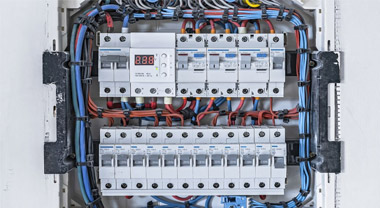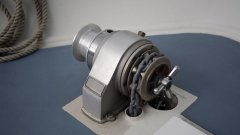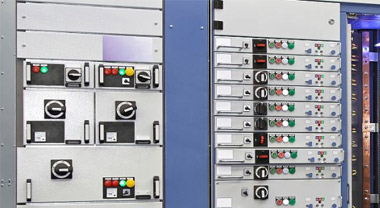What are some differences between isolators and circuit breakers?
This blog post aims to offer a comprehensive view on the subject of isolators and circuit breakers, two vital components in the field of electrical engineering. We'll uncover the specific functions of each, examine their design and operating principles, and most importantly, distinguish the differences between the two. By the end of this article, you should have a clear understanding of these two devices and their unique roles in an electrical system.
Table of Contents
- Introduction to Isolators and Circuit Breakers
- What are Isolators?
- What are Circuit Breakers?
- Differences Between Isolators and Circuit Breakers
- Uses and Applications
- Summary and Conclusion
Introduction to Isolators and Circuit Breakers
The world of electrical engineering is filled with devices designed to control, protect, and manage the flow of electrical power. Two of these essential devices are the isolator and the circuit breaker. Both play a pivotal role in the safety and efficiency of electrical systems, but they perform distinctly different functions. Let's begin by exploring each device individually.
What are Isolators?
Isolators, or disconnecting switches, are manually operated devices designed to disconnect a part of the electrical circuit when it is under no load condition. The primary purpose of an isolator is to isolate one portion of the circuit from the rest for safe maintenance or repair work.
Types of Isolators
Isolators come in a variety of forms, each designed for specific circumstances:
- Pantograph Isolator: Uses a folding arm mechanism for a compact, space-saving design.
- Double Break Isolator: This isolator design disconnects the circuit from both sides.
- Single Break Isolator: Disconnects the circuit from one side only.
Operation of Isolators
Isolators are used in a no-load condition, meaning they do not operate automatically but require manual operation. When the isolator is switched off, it completely isolates the circuit, ensuring a safe working environment for maintenance or repairs.
What are Circuit Breakers?
Circuit breakers are automatic electrical switches designed to protect an electrical circuit from damage caused by excess current, typically resulting from an overload or short circuit. They detect faults and immediately interrupt current flow by switching themselves off to prevent further damage.
Types of Circuit Breakers
Like isolators, circuit breakers also come in several types, including:
- Air Circuit Breakers (ACB): Use air as the arc extinguishing medium.
- Vacuum Circuit Breakers (VCB): Use vacuum as the arc extinguishing medium.
- Sulfur Hexafluoride Circuit Breakers (SF6): Use sulfur hexafluoride gas to quench the arc.
Operation of Circuit Breakers
Circuit breakers automatically respond to changes in current flow. If an overload or short circuit is detected, the circuit breaker will trip, interrupting the current and protecting the rest of the circuit.
Differences Between Isolators and Circuit Breakers
While isolators and circuit breakers might appear similar at first glance, they have some significant differences.
- Operation: Circuit breakers are automatic, meaning they can detect a fault condition and interrupt current flow without human intervention. Isolators, on the other hand, are manually operated and cannot automatically disconnect during a fault condition.
- Use Case: Circuit breakers are used for protection from electrical faults, while isolators are primarily used for maintenance and repair, ensuring the safety of maintenance personnel.
- Load Condition: Circuit breakers can operate under load conditions, whereas isolators only operate under no-load conditions.
- Arc Extinction: Circuit breakers are designed to extinguish the electrical arc created when interrupting the current flow, but isolators are not.
Uses and Applications
Now that we have a clear understanding of what isolators and circuit breakers are, let's delve into their uses and applications in various scenarios.
Uses of Isolators
Isolators are widely used in electrical substations and transmission lines. They are usually placed on either side of a circuit breaker and are used to ensure that the circuit breaker is completely de-energized for service or maintenance. This creates a visible gap, confirming that the circuit is safely isolated.
Uses of Circuit Breakers
Circuit breakers find applications in nearly all electrical systems, such as residential buildings, commercial structures, industrial plants, and power systems. They are critical for protecting electrical circuits by cutting off power whenever they detect a fault condition. For example, in residential use, a circuit breaker will trip to prevent electrical fires if an overloaded socket is detected.
Summary and Conclusion
In the world of electrical systems, both isolators and circuit breakers play crucial but distinctly different roles. An isolator is a manual device that disconnects part of the electrical circuit when it is under no load. It ensures the safety of the maintenance or repair personnel by completely isolating the circuit.
On the other hand, a circuit breaker is an automatic device that protects the electrical circuit from damage caused by excess current from an overload or short circuit. It detects faults and immediately interrupts current flow to prevent further damage.
The main differences between the two lie in their operation, use cases, load conditions, and the way they handle electrical arcs. Understanding these differences is essential for anyone involved in electrical work, as it helps them choose the right device for each specific situation and ensures the safety and efficiency of electrical systems.
We hope this guide has provided valuable insights into the differences between isolators and circuit breakers. For more information on this or related topics, please feel free to explore our other resources.




